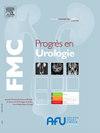La place de l’urologue dans le parcours d’assistance médicale à la procréation (AMP)
Q4 Medicine
引用次数: 0
Abstract
L’infertilité croissante des couples est un phénomène largement médiatisé et a fait l’objet de nombreuses déclarations politiques au cours des dernières années. Actuellement, les hommes consultent principalement après un spermogramme anormal prescrit par leur médecin traitant ou un gynécologue. Cependant, il est probable que les consultations chez l’urologue en première intention pour évaluer la fertilité masculine deviennent plus courantes. Les objectifs de sa prise en charge sont principalement de : (1) identifier et traiter les facteurs de risque modifiables pour améliorer la fertilité, favorisant une conception naturelle ou augmentant les taux de réussite des techniques d’assistance médicale à la procréation, (2) rechercher des pathologies associées à l’infertilité : tumeur testiculaire, cryptorchidie, hypogonadisme, syndromes génétiques, (3) rechercher et prendre en charge des troubles sexuels primaires ou secondaires.
The increasing infertility of couples is a widely publicized phenomenon and has been the subject of numerous political statements in recent years. Currently, men primarily consult after an abnormal semen analysis prescribed by their general practitioner or a gynecologist. However, it is likely that in the coming years, consultations with an urologist for initial evaluation of male fertility will become more common. The objectives of this care are primarily to: (1) identify and treat modifiable risk factors to improve fertility, favoring natural conception or increasing the success rates of assisted reproductive technologies, (2) search for pathologies associated with fertility: testicular tumor, cryptorchidism, hypogonadism, genetic syndromes, (3) search for and manage primary or secondary sexual disorders.
泌尿科医生在生殖医疗过程中的地位
夫妻不孕症的增加是一个被广泛报道的现象,也是近年来许多政治声明的主题。目前,男性主要是在接受全科医生或妇科医生开出的异常精子x光检查后去看医生。然而,男性生育能力的一线咨询可能会变得越来越普遍。接管其主要目标:(1)识别并解决可改变的危险因素,为提高肥力,培育设计自然或技术的成功率提高生殖医疗援助,(2)寻找疾病不孕:肿瘤分泌的睾丸,hendriksen、遗传综合征(3)寻找并掌控性紊乱的小学或中学。婚姻不孕症的增加是一种被广泛宣传的现象,也是近年来许多政治声明的主题。目前,男性主要是在全科医生或妇科医生处方的异常精液分析后进行咨询。然而,在未来的几年里,咨询泌尿科医生对男性生育能力的初步评估可能会变得更加普遍。are The care of this客观的“主要是:(1)查明和处理改变的risk factors to改进生育、羊角favoring natural黄金设计,雌性大鼠(The success of search for病理的辅助生殖技术,(2)associated with生育率:睾丸瘤、cryptorchidism hypogonadism genetic综合征、search for and manage黄金初级中学(3)性疾病。
本文章由计算机程序翻译,如有差异,请以英文原文为准。
求助全文
约1分钟内获得全文
求助全文

 求助内容:
求助内容: 应助结果提醒方式:
应助结果提醒方式:


